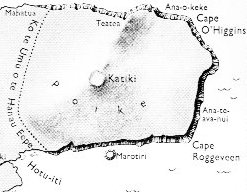8. I am jumping to conclusions you might say, but how else can I proceed when the path is lying under water since millenia. The Babylonian zodiac has the Mad Dog, a kind of man-beast (Toliman, α Centauri, or perhaps the Lupus constellation), holding his hand on the horizontal line which also has the sign of Saturn:
... And there is little doubt, in fact none, that Phaethon (in the strange transformation scenes of successive ages) came to be understood as Saturn. There is the testimony of Erastosthenes' Catasterisms, according to which the planet Saturn was Phaethon who fell from the chariot into Eridanus, and Stephanus of Byzantium calls Phaethon a Titan ... The Coalsack Nebula lies in the Milky Way (the River). The hand on the line is certainly a Sign. It could be meant as an indication of where Sun is going down at the horizon in the west (of the solar year). Allen: "Eratosthenes asserted that the stellar figure represented Χείρων, a title that, in its translated forms Chiron and Chyron, was in frequent poetical use in classical times, and is seen in astronomical works even to Ideler's day. This has appropriately been translated the Handy One, a rendering that well agrees with this Centaur's reputation. He was the son of Chronos and the ocean nymph Philyra, who was changed after his birth into a Linden tree, whence Philyrides occasionally was applied to the constellation; although a variant story made him Phililyrides, the son of Phililyra, the Lyre-loving, from whom he inherited his skill in music. He was imagined as of mild and noble look, very different from the threatening aspect of the centaur Sagittarius; and Saint Clement of Alexandria wrote of him that he first led mortals to righteousness ..." New Larousse Encyclopedia of Mythology: "... Their torso and head were those of a man; the rest of their body belonged to a horse. They had not always been like this: the first representations of Centaurs show them as giants with hairy bodies; then they were depicted as men with the hindquarters of a horse. Their definitive appearance goes no further back than the period of Phidias. Natives of Thessaly, the Centaurs were descendants of Ixion, son of Ares. Ixion was engaged to marry Dia, daughter of Eioneus. There was a dispute between Ixion and his future father-in-law and Ixion threw him into a burning ditch. This crime earned universal reprobation and Ixion was forced to seek refuge with Zeus who offered him hospitality. But Ixion had the audacity to covet Zeus' own wife, Hera. In order to test how far his impudence would go, Zeus formed a cloud into the likeness of Hera and gave it to Ixion. From this strange union was born a monster, Centaurus, who, himself uniting with the mares of Pelion, fathered the race of the Centaurs ..." Ares is Mars and his son was Ixion. The son comes after the father and Ixion should be beyond spring, presumably after midsummer when the mild and benevolent rainy season arrives. The hairy giants of old probably had hair not only on their backs but also in front. The White Goddess: "... The word 'Cherion' [the name of the sacred king of the Centaurs] is apparently connected with the Greek cheir, a hand, and 'Centaurs' with centron, a goat ..." "... To this type of Hercules [see at Kai Viri] belong much diverse characters as Hercules of Oeta, Orion the Hunter of Crete, Polyphemus the Cyclops, Samson the Danite, Cuchulain of Muirthemne the Irish Sun-hero, Ixion the Lapith - who is always depicted stretched in a 'five-fold bond' around a Sunwheel - Agag the Amelekite, Romulus of Rome, Zeus, Janus, Anchises, the Dagda and Hermes ... Wikipedia: "Ixion was a figure also known to the Etruscans, for he is depicted bound to the spoked wheel, engraved on the back of a bronze mirror, ca 460-450 BCE, in the British Museum. Whether the Etruscans shared the Ixion figure with Hellenes from early times or whether Ixion figured among those Greek myths that were adapted at later dates to fit the Etruscan world-view, the figure on the mirror-back is shown as winged, a characteristic shared with Etruscan daimones and Underworld figures rather than human heroes." I think the curious feature of a burning ditch was remembered on Easter Island. It could basically be the great circle 'fire' through midsummer. ... It should be stated right now that 'fire' is actually a great circle reaching from the North Pole of the celestial sphere to its South Pole ...
The name in the sacred geography of Easter Island was Ko te Umu o te Hanau Eepe (The Oven of the 'Long-ears'), and it stretches across the neck of the high peninsula in the east (Poike). But we need a new page for an introduction to this theme. Somewhere in The Eighth Island is mentioned that this part of the island was named 'the neck of the turtle'. It makes sense if we think of the turtle as the 'earth turtle' of Easter Island. The high Poike in the east will then be the head of the land and the line of fire across the neck could represent a noose with which the turtle is caught. |

